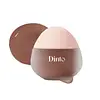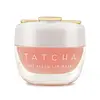What's inside
What's inside
 Key Ingredients
Key Ingredients

 Benefits
Benefits

 Concerns
Concerns

 Ingredients Side-by-side
Ingredients Side-by-side

Hydrogenated Polyisobutene
EmollientDiisostearyl Malate
EmollientPhytosteryl/Isostearyl/Cetyl/Stearyl/Behenyl Dimer Dilinoleate
Skin ConditioningHydrogenated Poly(C6-14 Olefin)
EmollientMicrocrystalline Wax
Emulsion StabilisingButyrospermum Parkii Butter
Skin ConditioningSynthetic Wax
AbrasiveEuphorbia Cerifera Wax
Mica
Cosmetic ColorantEthylene/Propylene/Styrene Copolymer
Polyglyceryl-2 Triisostearate
EmulsifyingAstrocaryum Murumuru Seed Butter
EmollientGlyceryl Caprylate
EmollientCI 77491
Cosmetic ColorantCaprylyl Glycol
EmollientTocopheryl Acetate
AntioxidantCI 77891
Cosmetic ColorantCopernicia Cerifera Wax
CI 42090
Cosmetic ColorantCI 77492
Cosmetic ColorantParfum
MaskingButylene/Ethylene/Styrene Copolymer
CI 15850
Cosmetic ColorantTriethoxycaprylylsilane
Pentaerythrityl Tetra-Di-T-Butyl Hydroxyhydrocinnamate
AntioxidantLimnanthes Alba Seed Oil
Skin ConditioningPrunus Armeniaca Kernel Oil
MaskingCamellia Japonica Seed Oil
EmollientSimmondsia Chinensis Seed Oil
EmollientMacadamia Ternifolia Seed Oil
EmollientRicinus Communis Seed Oil
MaskingVitis Vinifera Seed Oil
EmollientCaprylic/Capric Triglyceride
MaskingBHT
AntioxidantTheobroma Cacao Seed Extract
AntioxidantTocopherol
AntioxidantHydrogenated Polyisobutene, Diisostearyl Malate, Phytosteryl/Isostearyl/Cetyl/Stearyl/Behenyl Dimer Dilinoleate, Hydrogenated Poly(C6-14 Olefin), Microcrystalline Wax, Butyrospermum Parkii Butter, Synthetic Wax, Euphorbia Cerifera Wax, Mica, Ethylene/Propylene/Styrene Copolymer, Polyglyceryl-2 Triisostearate, Astrocaryum Murumuru Seed Butter, Glyceryl Caprylate, CI 77491, Caprylyl Glycol, Tocopheryl Acetate, CI 77891, Copernicia Cerifera Wax, CI 42090, CI 77492, Parfum, Butylene/Ethylene/Styrene Copolymer, CI 15850, Triethoxycaprylylsilane, Pentaerythrityl Tetra-Di-T-Butyl Hydroxyhydrocinnamate, Limnanthes Alba Seed Oil, Prunus Armeniaca Kernel Oil, Camellia Japonica Seed Oil, Simmondsia Chinensis Seed Oil, Macadamia Ternifolia Seed Oil, Ricinus Communis Seed Oil, Vitis Vinifera Seed Oil, Caprylic/Capric Triglyceride, BHT, Theobroma Cacao Seed Extract, Tocopherol
Triisostearin
Skin ConditioningPolyglyceryl-2 Triisostearate
EmulsifyingSqualane
EmollientDextrin Palmitate
EmulsifyingVp/Hexadecene Copolymer
Silica
AbrasiveDextrin Palmitate/Ethylhexanoate
EmulsifyingCamellia Japonica Seed Oil
EmollientPrunus Persica Kernel Extract
MoisturisingPrunus Persica Juice
MoisturisingPrunus Persica Leaf Extract
EmollientCitrus Unshiu Peel Extract
MaskingSaccharomyces/Rice Ferment Filtrate
Skin ConditioningCamellia Sinensis Leaf Extract
AntimicrobialCladosiphon Okamuranus Extract
Skin ConditioningAllantoin
Skin ConditioningStearyl Glycyrrhetinate
Skin ConditioningTocopherol
AntioxidantPyridoxine Hcl
Skin ConditioningWater
Skin ConditioningPropanediol
SolventButylene Glycol
HumectantEthylhexylglycerin
Skin ConditioningParfum
MaskingPhenoxyethanol
PreservativeLimonene
PerfumingLinalool
PerfumingCI 77491
Cosmetic ColorantTriisostearin, Polyglyceryl-2 Triisostearate, Squalane, Dextrin Palmitate, Vp/Hexadecene Copolymer, Silica, Dextrin Palmitate/Ethylhexanoate, Camellia Japonica Seed Oil, Prunus Persica Kernel Extract, Prunus Persica Juice, Prunus Persica Leaf Extract, Citrus Unshiu Peel Extract, Saccharomyces/Rice Ferment Filtrate, Camellia Sinensis Leaf Extract, Cladosiphon Okamuranus Extract, Allantoin, Stearyl Glycyrrhetinate, Tocopherol, Pyridoxine Hcl, Water, Propanediol, Butylene Glycol, Ethylhexylglycerin, Parfum, Phenoxyethanol, Limonene, Linalool, CI 77491
 Reviews
Reviews

Ingredients Explained
These ingredients are found in both products.
Ingredients higher up in an ingredient list are typically present in a larger amount.
Camellia Japonica Seed Oil comes from the Japanese Camellia plant. This plant is native to East Asia and known as "Tsubaki" in Japanese.
Camellia Japonica Seed Oil is rich in oleic acid. This makes it a great emollient. Emollients help soften and soothe the skin by forming a barrier. This barrier traps moisture within, keeping your skin hydated.
Ci 77491 is also hydrated iron III oxide. It's sole purpose is to give a red/pink hue to products.
Iron III oxides are classified as inorganic chemicals for coloring.
Synthetically created Ci 77491 is considered safer than those naturally found. This is because the synthetically created version may contain less impurities. Iron oxides are generally non-toxic and non-allergenic.
Learn more about CI 77491Parfum is a catch-all term for an ingredient or more that is used to give a scent to products.
Also called "fragrance", this ingredient can be a blend of hundreds of chemicals or plant oils. This means every product with "fragrance" or "parfum" in the ingredients list is a different mixture.
For instance, Habanolide is a proprietary trade name for a specific aroma chemical. When used as a fragrance ingredient in cosmetics, most aroma chemicals fall under the broad labeling category of “FRAGRANCE” or “PARFUM” according to EU and US regulations.
The term 'parfum' or 'fragrance' is not regulated in many countries. In many cases, it is up to the brand to define this term.
For instance, many brands choose to label themselves as "fragrance-free" because they are not using synthetic fragrances. However, their products may still contain ingredients such as essential oils that are considered a fragrance by INCI standards.
One example is Calendula flower extract. Calendula is an essential oil that still imparts a scent or 'fragrance'.
Depending on the blend, the ingredients in the mixture can cause allergies and sensitivities on the skin. Some ingredients that are known EU allergens include linalool and citronellol.
Parfum can also be used to mask or cover an unpleasant scent.
The bottom line is: not all fragrances/parfum/ingredients are created equally. If you are worried about fragrances, we recommend taking a closer look at an ingredient. And of course, we always recommend speaking with a professional.
Learn more about ParfumThis ingredient is a form of glycerin with emulsifying and emollient properties.
As an emulsifier, this ingredient helps keep products together while adding a thick texture. The manufacturer states this ingredient has emollient properties. Emollients help keep the skin hydrated by trapping moisture in.
Polyglyceryl-2 Triisostearate is created by reacting diglycerin and isostearic acid. Due to the isostearic acid base, it may not be safe for Malassezia or fungal acne.
Learn more about Polyglyceryl-2 TriisostearateTocopherol (also known as Vitamin E) is a common antioxidant used to help protect the skin from free-radicals and strengthen the skin barrier. It's also fat soluble - this means our skin is great at absorbing it.
Vitamin E also helps keep your natural skin lipids healthy. Your lipid skin barrier naturally consists of lipids, ceramides, and fatty acids. Vitamin E offers extra protection for your skin’s lipid barrier, keeping your skin healthy and nourished.
Another benefit is a bit of UV protection. Vitamin E helps reduce the damage caused by UVB rays. (It should not replace your sunscreen). Combining it with Vitamin C can decrease sunburned cells and hyperpigmentation after UV exposure.
You might have noticed Vitamin E + C often paired together. This is because it is great at stabilizing Vitamin C. Using the two together helps increase the effectiveness of both ingredients.
There are often claims that Vitamin E can reduce/prevent scarring, but these claims haven't been confirmed by scientific research.
Learn more about Tocopherol